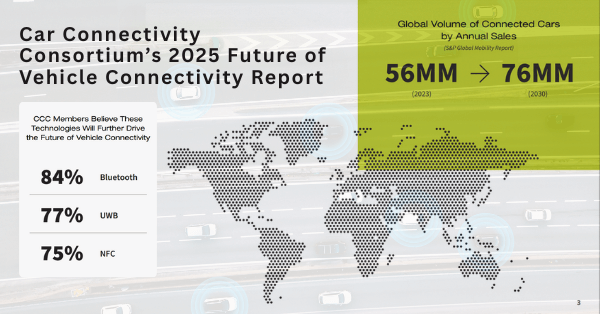BT results: job cuts and broadband losses
BT is pressing ahead with cost-cutting as it confronts sharper broadband competition, softer device demand, and structural declines in legacy services.
Key metrics and outlook
BT reduced its total workforce by about 6% in the first half of its financial year, down to roughly 111,000 employees from 116,000 at the start of the period, as part of a transformation program aimed at radical simplification and modernization. The group reported around £250 million in additional annualized cost savings over the period, bringing cumulative savings to about £1.2 billion across the first 18 months of the program and reaffirming a target of £3 billion in annual savings. On the top line, group revenue for the six months to September 30 declined about 3% year over year to £9.8 billion, reflecting lower landline usage and a weaker mobile device market as customers hold onto handsets for longer. Pre-tax profit fell around 11% to £862 million. Most notably, Openreach’s broadband base contracted in the quarter, with approximately 242,000 fewer broadband customers in Q2 FY25 as alternative networks and cable/fiber rivals intensified share gains and overall broadband demand softened.
Drivers of decline in UK broadband
The UK fixed market is now a dense battleground. Besides established players, a wave of alternative network providers—such as CityFibre, Hyperoptic, Community Fibre, G.Network, and Gigaclear—has expanded fiber-to-the-premises (FTTP) footprints, often with aggressive pricing and promotional speeds that are eroding Openreach-based share in competitive postcodes. Virgin Media O2 also remains a formidable force with extensive cable coverage and a growing fiber footprint. At the same time, legacy landline usage continues to fall, and the mobile category is seeing longer device replacement cycles, which dampens upgrade-driven revenues for operators. These pressures are landing as BT refocuses on its UK core and streamlines or exits non-core international activities.
UK broadband and 5G convergence: what it means
The current dynamics could reshape wholesale economics, FTTP migration pace, and the balance of power between incumbents and altnets over the next 12–24 months.
FTTP overbuild and wholesale pricing
Large-scale overbuild in urban and suburban areas is pushing price-based competition and promotional intensity, especially on gigabit tiers. For Openreach, wholesale pricing strategies and long-term contract incentives will remain central to defending volumes and guiding retail ISPs toward FTTP. While discounts help accelerate fiber adoption and reduce copper-related costs, they can compress margins if not matched by operating efficiencies and higher attach of value-added services. The pace at which ISPs and end-users move from copper to FTTP will also influence how quickly BT can retire legacy assets and unlock structural cost takeout.
Margins under pressure amid FTTP and 5G capex
BT still needs to fund dense FTTP rollout and continued mobile network upgrades while profits are under pressure. That makes automation, digital channels, and AI-enabled service operations important levers to protect customer experience as headcount declines. The execution risk is real: cut too slowly and costs lag market reality; cut too fast and service KPIs can wobble, inviting churn. The companies that best translate modernization into lower operating costs per line and higher lifetime value per account will separate from the pack.
Fixed-mobile convergence for retention and ARPU
Fixed-mobile convergence should be a core retention play. BT’s integrated position with EE enables bundles that combine FTTP, 5G, Wi‑Fi, TV, and security—useful for stabilizing churn and lifting average revenue per user (ARPU). For small and mid-sized businesses, managed connectivity with security, SD-WAN/SASE, and collaboration add-ons can deepen relationships and reduce price-only comparisons. Expect more focus on value-led packaging and loyalty mechanics to slow defection in competitive postcodes.
BT strategy: pricing, bundles, and network
How BT balances wholesale tactics, product bundling, and network milestones will shape its recovery trajectory.
Portfolio simplification and UK focus
BT is continuing to streamline its global footprint to concentrate capital and leadership attention on the UK. The Business division’s stabilization will hinge on simplifying product lines, improving delivery lead times, and sharpening vertical plays in sectors like public services, healthcare, and retail where end-to-end connectivity and security are mission-critical.
Openreach pricing, FTTP migration and copper switch-off
Expect continued incentives to migrate ISPs and end-users onto FTTP, including term-based discounts and installation promotions aligned to coverage expansion. The strategy should be paired with a clear copper decommissioning roadmap and customer education to avoid service-risk headlines during all‑IP transitions. Coordination with resellers and retail ISPs is vital to keep migrations orderly and minimize churn to altnets mid-process.
Network modernization and all-IP milestones
BT’s near-term network priorities include expanding FTTP coverage, advancing all‑IP migration, and enhancing 5G capacity and coverage. Over time, the introduction of more cloud-native network functions and operational AI can further compress unit costs and improve time-to-repair, but the benefits depend on disciplined execution and consistent customer experience as the organization thins down.
What it means for rivals and altnets
Competitive intensity will increase, but capital discipline and route-to-market choices will decide who wins share profitably.
Altnet growth and consolidation outlook
Altnets are capturing churn in fiber-ready postcodes with symmetric speeds and sharper pricing, yet many still face financing constraints and build-to-cash timing risks. As overbuild rises, consolidation or network-sharing deals are likely, and ISPs will lean into multi-network wholesaling to optimize coverage and commercial terms. Those that scale operations and achieve strong take-up per build cluster will be best positioned if the market rolls up.
Virgin Media O2 fiber expansion
Virgin Media O2’s broad cable base and ongoing fiber investments, including expansion via its fiber joint venture, are intensifying pressure in urban areas. As VMO2 upgrades to full fiber across more of its footprint, the competitive bar on speed, latency, and promotional pricing rises, making value-led bundles and superior in-home experience (Wi‑Fi optimization, smart gateways, proactive care) differentiators rather than nice-to-haves.
Actions for telecom buyers and partners
With supplier strategies shifting, buyers should protect service continuity, pricing certainty, and modernization roadmaps.
Guidance for enterprises and public sector
Stress-test connectivity resilience and SLA commitments during supplier transformation, particularly for critical sites and remote workers. Consider dual sourcing across Openreach-based ISPs and at least one alternative network where available, and align contract terms with all‑IP migration timelines to avoid surprises. For branch networks, prioritize SD‑WAN/SASE overlays that allow transport diversity and faster failover regardless of the last-mile provider.
Guidance for ISPs and MSPs
Adopt multi-network wholesale strategies to maximize addressable footprint and negotiating leverage. Reframe offers around FTTP value—symmetry, reliability, and premium care—rather than headline speed alone. Invest in automated switching and onboarding to reduce friction; as industry switching processes improve, the speed and quality of migration will be a commercial weapon.
Guidance for investors and vendors
Track BT’s service metrics alongside cost-out progress to gauge sustainability of savings. Expect pricing skirmishes in overbuild zones and plan for selective M&A as altnet funding tightens. Vendors aligned to automation, customer care modernization, and field-force productivity will be best placed as operators seek opex relief without compromising experience.









































